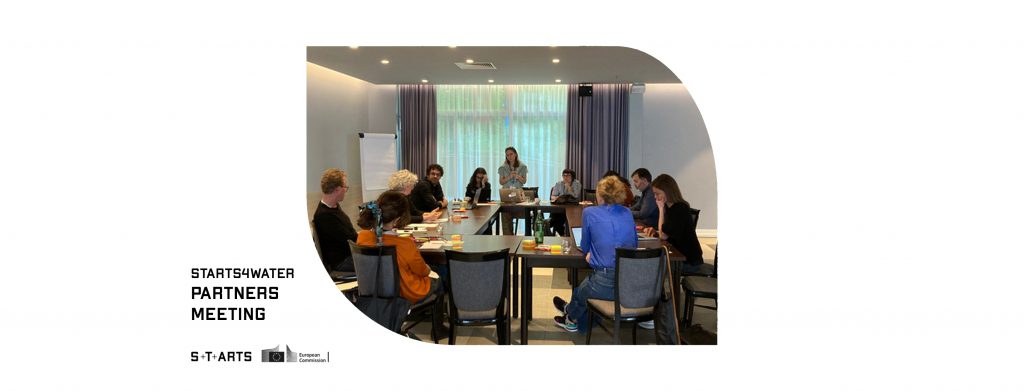On the 28th and 20th of April, S+T+ARTS4Water Consortium partners met in Dubrovnik hosted by UR Institute. It was the first physical meeting that the partners had since the beginning of S+T+ARTS4Water and a big milestone in the project’s development.
Each partner had the opportunity to present the evolution of the S+T+ARTS residencies they are hosting. Artists have during the last months developing their projects while meeting different experts and stakeholders that opened different possibilities to their research process. Scientists, industry representatives, technology experts, public sector officials, other artists or even citizens themselves have been giving input at different stages of the project. Cross-sectoral and transdisciplinary collaborations are at the heart of the S+T+ARTS 4Water DNA and the artistic research phase of the residencies has put this in practice.
UR hosted S+T+ARTS artists were also present during the meeting and presented the development of their work to the Consortium partners. Robertina Šebjanič and Marjan Žitnik explained how their meetings with the Institute for Marine and Coastal Research of the University of Dubrovnik researchers, especially dr. sc. Marijana Hure – a biologist from the Institute for Marine and Coastal Research gave them valuable insights into their project. Together they spent time exploring underwater sounds in the Dubrovnik harbour. Meeting with various administrative departments of the City of Dubrovnik (Administrative Departments for Education, Sports, Social Welfare and Civil Society; Urbanism, Spatial Planning and Environmental Protection; European Funds, Regional and International Cooperation; DURA City Of Dubrovnik Development Agency) also helped them unpack the social innovation aspect of their project.
The meeting also helped to prepare our participation at the S+T+ARTS Editorial meeting that was hosted by Ars Electronica. We were looking into the key words and main key messages we wish to bring forward as a consortium as well as the common vocabularies we can map. This helped us design a roadmap for the dissemination and communication strategy of the project.


